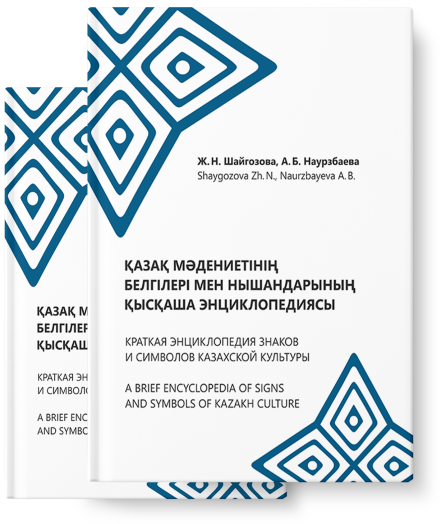
A short encyclopedia of
Signs and symbols of
Kazakh culture

The belt, worn by both men and women, occupies a special place among the symbolic accessories of the traditional costume of the Kazakhs. Belts can be made of leather, velvet, silk and wool. According to popular belief, the belt in the form of a circle formed a protective interior of a person and reflected the negative influence of the environment. Therefore, leather belts were decorated with patterned embossing, metal coverings with inlays of semi-precious stones and carved bone plates and were called kise, a kind of symbol of male authority and dignity.
Women’s belts, which were also richly decorated, also had a protective function. The beldik is an active participant in rites and rituals; it was first tied around a teenager at the age of 13-15, and from that moment on it was considered a dzhigit. Moreover, the belt was a part of funeral rites. Until the ethnographic modern times, when a man died, the belt was hung on a pole as one of the signs of mourning. Later, the belt was usually kept in the house and it was attributed magical and protective functions, considered a talisman and embodiment of male power, a sign of status and wealth.
Experts mention the ancient ritual of belting among traditional craftsmen, which symbolized the beginning of the independent work of a newly minted master. In many cultures of the world the belt is used as a talisman.

